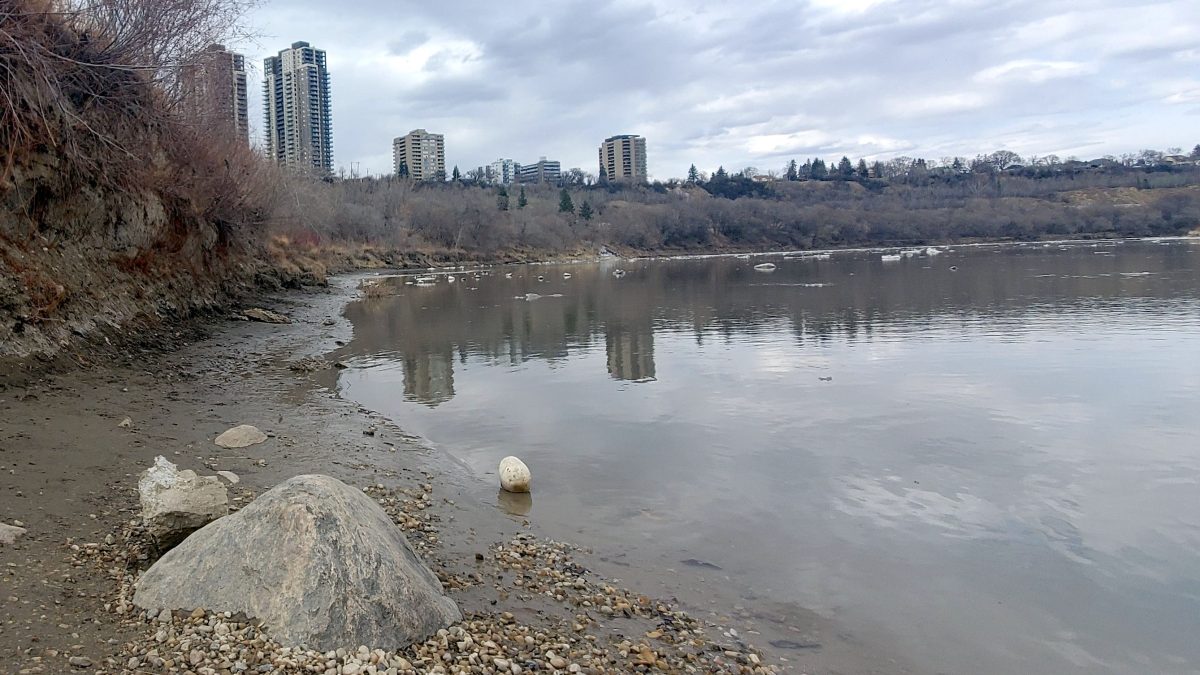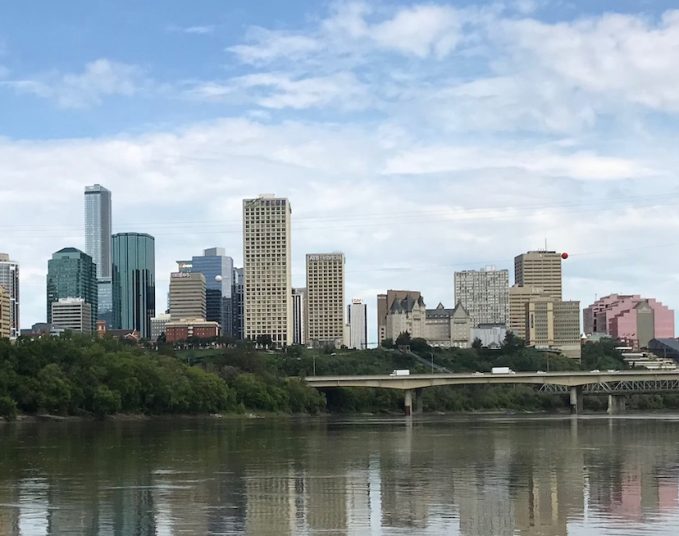As temperatures have increased here in Alberta over recent weeks, so has worry of drought. Our neighbours in the south and northwest are already preparing for what many expect will be a hot and dry summer by signing water-sharing agreements throughout much of southern Alberta. They are enacting drought response plans. So, should you be worried, too? Well, things aren’t looking quite so bad if you’re in Edmonton.
More than 70 per cent of Canada is currently experiencing some degree of drought, with Alberta among the hardest hit regions in the country. Despite this, Edmonton is poised to fare relatively well.
That doesn’t mean water levels aren’t down. The North Saskatchewan River is currently at about 82 per cent of its typical average — something not lost on those who have taken a stroll along the riverbanks recently. But it does mean we’ve not been as acutely impacted as have the regions to the north and south of us. That’s due to a confluence of factors — from headwaters that received more precipitation than other watersheds, to lower demand on water supplies.
“At this point, the water demands on the North Saskatchewan River Basin are quite a bit lower than our availability of water. Only four per cent is consumptive use,” said Mary Ellen Shain, a watershed specialist with the North Saskatchewan Watershed Alliance (NSWA). “The demand on our water supplies is actually quite a bit lower than it is in the south, which is part of why we don’t need to react the way they do in the south. We’re still in quite good shape, even though we’re at 82 per cent of our flows.”
But while Shain and her colleagues at the NSWA might agree that Edmonton is not facing anywhere near as dire a summer as southern Alberta, they did caution that preparedness around drought is still of paramount importance.
“We’re looking good, but with caution,” Shain said. “Drought can be a bit of a creeping crisis. It’s often multi-year droughts we’re worried about and we do need to keep our eyes on the possibility that our water levels will continue to dwindle … and that’s not something well within our control.”
Andre Asselin, the executive director of the Alberta Water Council, agrees and noted that not everywhere within the Greater Edmonton Metropolitan Region will reap the benefits the city does.
“Edmonton is kind of in a sweet spot [geographically],” he said. “It often turns out better than the southern and northern parts of the province, but that’s not to say Edmonton’s fine.”
The Alberta Water Council, the NSWA and other watershed groups across the province have been working with municipalities and other stakeholders to spread awareness and encourage drought preparedness. Asselin said the areas surrounding the city are likely in for a much harder time than we are.
“We’re still looking at moderate to severe drought conditions and that will have an impact at various scales and for different individuals. So, Edmonton and the surrounding municipalities might be fine from a drinking water perspective, but the dry land farmers around us are going to have a rough year,” he said. “Everywhere in the greater Edmonton area … all around us within 100 kilometres are looking at moderate to severe drought.”
So, what gives? How can we be in a position of relative comfortability while communities just outside the city are staring down far harsher results? Well, the answer is that since those communities draw from the same distribution centres, towns and residents living in the surrounding areas will also benefit from the relative water security Edmonton experiences, but with far less irrigation infrastructure in place, agricultural areas in the vicinity may not.
“Agricultural communities will be at greater risk due to the fact they’re so reliant on local rainfall,” Shain said. “Many of them don’t have the infrastructure to irrigate dry lands, even from local tributaries.
“Those tributaries — including urban creeks like the Sturgeon River and Whitemud Creek — each have their own watersheds that are fed by precipitation that falls in that area. Their headwaters aren’t in the mountains, but rather in the drier parkland and foothills regions that are much drier than usual this year.”
Savvy AF. Blunt AF. Edmonton AF.




